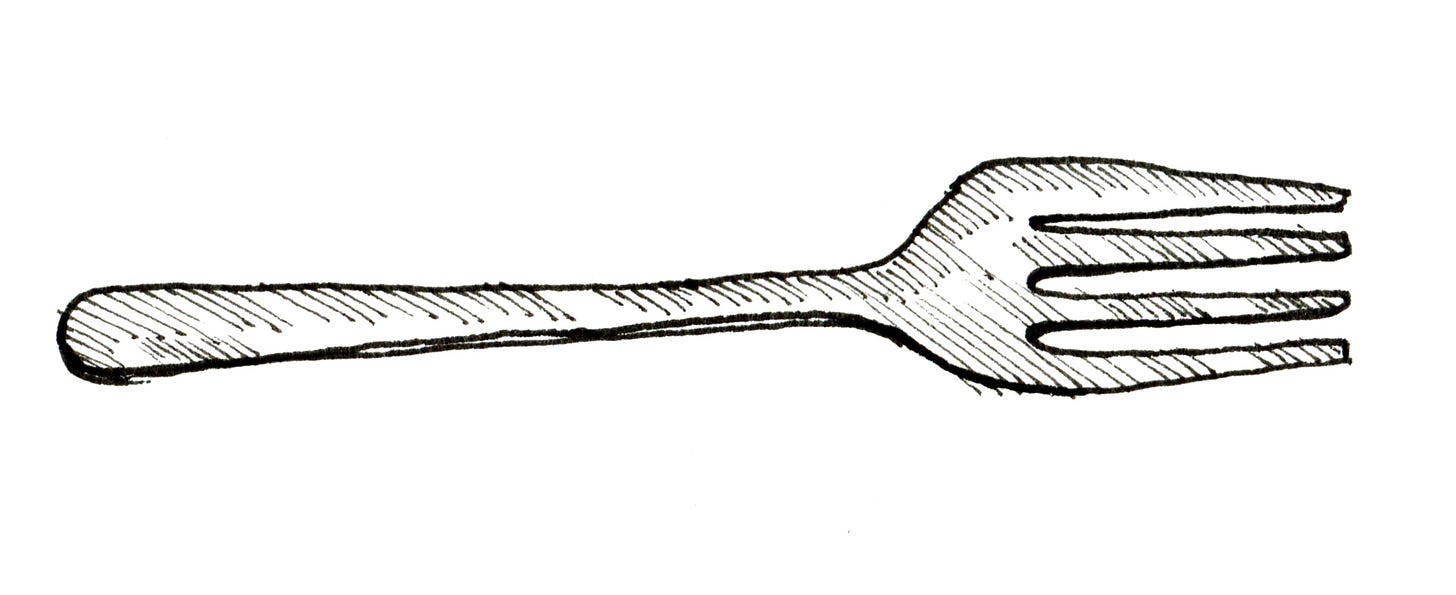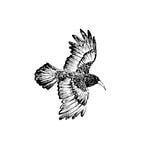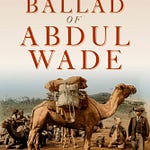While still a child, I acquired the knowledge that there were people in the world who used both a fork and a spoon to eat spaghetti. I have no idea where this knowledge came from. I don’t recall reading about it or seeing it on television or even hearing about it. It was knowledge that I somehow obtained through a process of gastronomical osmosis. One day I didn’t know about the “spooners” and the next day I did.
As far as I remember, the technique was to scoop up the spaghetti with the fork held in the right hand and then place the tines of the fork against the spoon, held in your left hand, and twirl the fork. All this occurred over the plate. The concavity of the spoon would help shape a tight little nest of spaghetti as you twirled the fork. It was then conducted to your mouth, neatly and drip free.
I assume neatly and drip free as I never actually did this, ever. It made no sense to me even at a young age. Spaghetti was to be slurped and sucked. Neatly had no place at the table. Nor did I know anybody who ate spaghetti this way. The only thing I did know was that people who ate spaghetti with a fork and a spoon were better than me. They were Posh.
I’ve been thinking a lot about cutlery lately. A few weeks back a friend told a group of us how an American office colleague had claimed that the hardest thing about adapting to life in Australia was watching people continuously hold their knife in their hand during meals. The American explained that in the States, the knife is used to chop the meal into pieces and is then laid to rest across the top of the plate, while the fork is transferred to the right hand and used to consume the pre-cut pieces.
The Australians in the group had a bit of a laugh at this, the term “Nutso” was used. Then an American interrupted us to ask, “Are you saying you eat with a knife in your hand? Is that like for self-defense or something?”
At that point, I stopped laughing and went digging. Turns out, not only are the Americans putting their knives down during meals, but they even have names for it, the “Zigzag Method” or the “American Shuffle”, to describe the movement of the fork between the left and right hands during the meal.
The European style of knife and fork use, and the one employed in Australia, is a relatively new method, designed for speed, to get that freshly cut piece of food up to your mouth as quickly as possible. But it wasn’t always this way. We too used to be Zigzaggers and Shufflers.
Of the three amigos of western cutlery, the knife, the fork, and the spoon, the modern fork is the youngest. In the 11th century a Byzantine Princess, recently married to a Roman Emperor, turned up in Italy with a two-pronged, solid gold fork. It blew people’s minds. The Catholic Church denounced it, called the fork a vanity. “Fingers were good enough for Jesus, do you think you’re better than us?” asked the clergy. When the Princess died two years later, the Church gleefully attributed her death to her use of the fork.
Up until the Princess’ arrival, the Italians had been eating their pasta with an instrument that resembled a long wooden spike. The fork’s multiple tines proved much more effective and, despite the religious condemnation, the fork took off in Italy.
But not so in other countries. In England and France, the fork was seen as an Italian affectation, its use effeminate. It wasn’t until the 17th century that the fork gained popularity outside of Italy. Before that, meals were eaten with fingers, knives and spoons.
Whether fingers, knives or spoons, it was always the right hand making its way to the mouth. When the fork came along, it too was used only in the right hand when taking food from plate to pie-hole. This was the method that the British took to the United States of America, and which remains in practice there today. In Europe though, at some point after the founding of the United States, it all became a bit too much work to keep shuffling the fork between left and right hand, and so in Europe the left hand assumed the role of conducting the food to the mouth.
The rise of the fork also impacted modern knife designs. When the knife did all the stabbing, cutting and transporting of food from plate to mouth, it required a sharp point. Once the fork had usurped the knife in these duties, the knife’s sharp point became superfluous. In 1669, French King Louis XIV, banned sharp-pointed knives from the dining tables of France.
Since the revelation of the Zigzag Method, I’ve not been able to stop seeing Australians’ more modern yet more primitive, aggressive cutlery practices. Knives gripped in white-knuckled hands, serrated blades waved around to make a point, stabbed in the direction of eating partners. It all looks positively dangerous. “Put down the knife!” I want to say. How had I never noticed this?
Etiquettes and orthodoxies and cultural norms embed themselves unquestioned into our lives. They hold us to one line of action, to a singular approach to life’s challenges, limiting dissenting thoughts. They lay dormant and unchallenged until we shine a light on them or have them questioned, either by ourselves or Byzantine Princesses, if we’re lucky. Though generally neither right nor wrong, when placed under the spotlight of examination, some do indeed appear to be “nutso”, while others are just constraining.
Growing up, I feared that one day I would find myself in a posh restaurant, surrounded by posh people. And there, unable to navigate the fork and spoon situation, my ignorance would be exposed.
But if you come around my way these days, you may catch me eating pasta with a spoon. Not a fork and a spoon, just a spoon. And not spaghetti - only the pasta shapes that don’t lend themselves to forks, like farfalle and orecchiette.
No more chasing food around a plate with a fork, tied to some cultural norm in direct opposition to common sense. I have extended the use of the spoon beyond pasta. My rule now is if I serve it from pot to plate with a spoon, then I eat it with a spoon. Peas? Spoon. Shakshuka? Spoon. Couscous? Spoon.
This is not a step backwards to the time before forks. This is an advance, a change in direction. I have broken free from the orthodoxy of the tines. And with waters rising, battles raging and order rapidly fading, any forward progress feels more important than ever.
















Share this post